Table of contents
- Market analysis of the 600 super sports car Decline of a class?
- 600 market fell sharply worldwide
- Price difference too “huge” Bikes is lower
- 1000s popular because of German greed for performance?
- 600 perfect for training on the racetrack
- Young racing talent cannot avoid 600 cc
- 600 remain an integral part of the product range
- 600 popular on the used market
- Second-hand market overview of 600 super sports cars
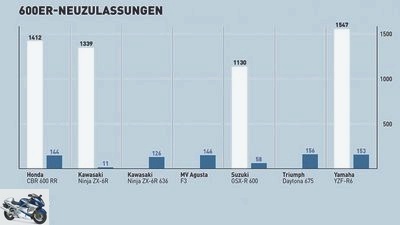
Diagram: MOTORCYCLE
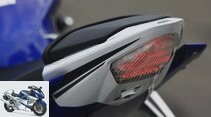
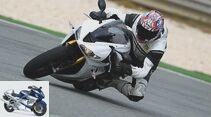
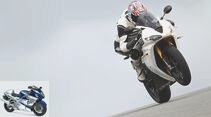
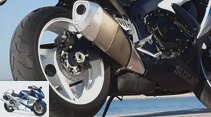
43 pictures
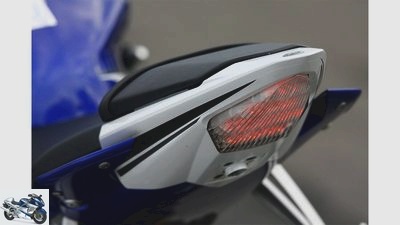
fact
1/43
Positive: engine speed hornier, more toxic
Engine, chassis consistently geared towards racing
Model RJ11 compression damping front and rear adjustable in high and low speed.
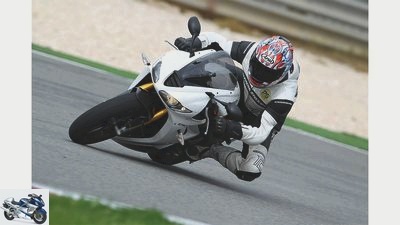
Paul Barshon
2/43
The R model has been available since 2011 with an Ohlins chassis, automatic gearshift, Brembo brake system, special paintwork and one or two carbon applications.
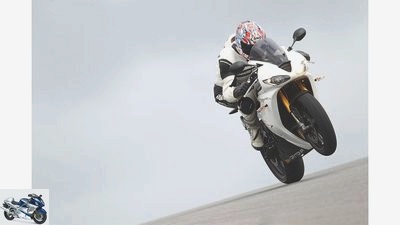
Paul Barshon
3/43
Toy number 5: Triumph Daytona 675 / R.
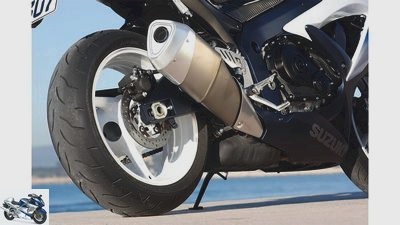
Jorg Kunstle
4/43
From the stovepipe to the stub exhaust. From 2006 onwards, the Suzi was technically superior and something to look at.
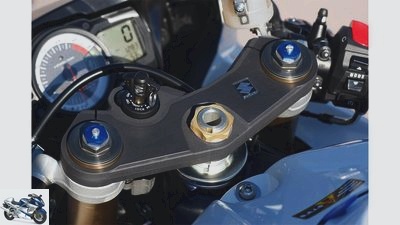
Jorg Kunstle
5/43
Positive: Well-balanced vehicle with solid mechanics, from model K6 as standard with three-way adjustable footrests.
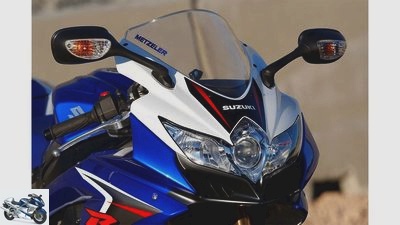
Jaime de Diego
6/43
… a tapered front a GSX-R model.
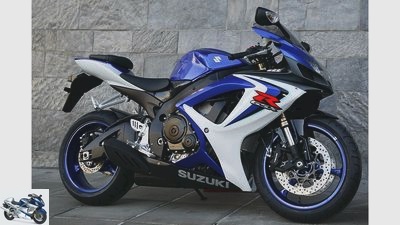
fact
7/43
Design revolution. For the first time, mirror indicators marked and …
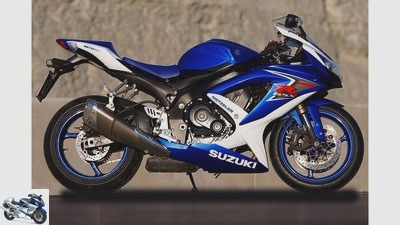
Jaime de Diego
8/43
Negative: no ABS available.

fact
9/43
Toy number 4: Suzuki GSX-R 600.
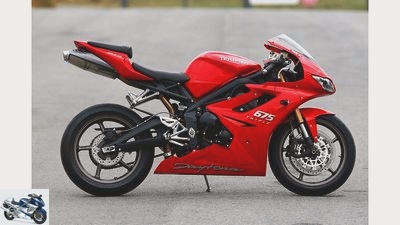
fact
10/43
Negative: Rather seldom on the used market, lower contingent of spare parts, higher price level from newer years of construction.
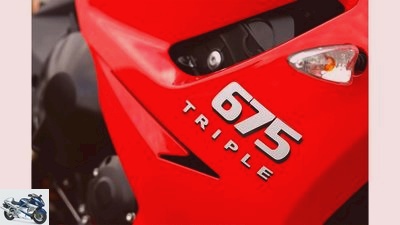
fact
11/43
Positive: Solid three-cylinder with a full rev mid-range, slim bike with a high seating position, from 2011 R version with Ohlins chassis, Brembo brakes, automatic gearshift and carbon parts available, well-functioning Race ABS from model year 2013.
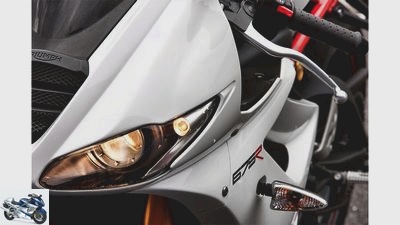
Paul Barshon
12/43
Triumph Daytona 675 R.
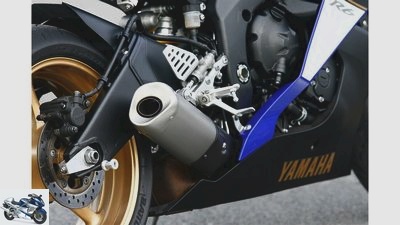
fact
13/43
Leaning freedom beyond good and bad thanks to the minimalist stub exhaust and high footrests.
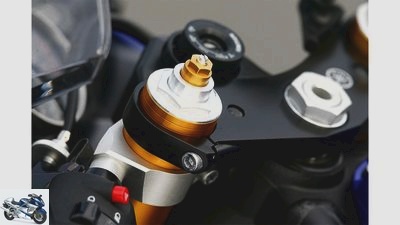
fact
14/43
Negative: No steering damper, no ABS, hard throttle response, not very suitable for everyday use.
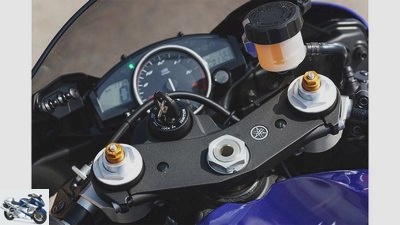
Jorg Kunstle
15/43
This classic round instrument characterizes the RJ11 series. Most of the time, the needle is far to the right.
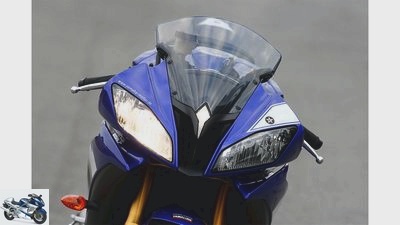
fact
16/43
Yamaha YZF-R6.
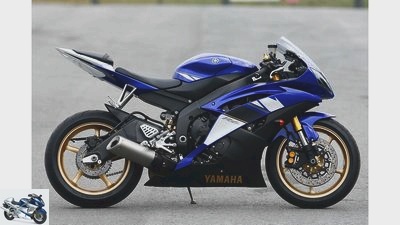
fact
17/43
Yamaha YZF-R6.
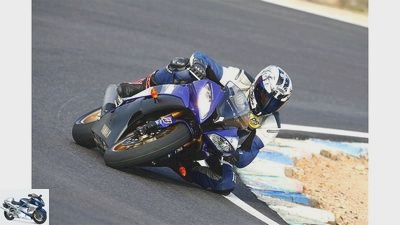
fact
18/43
Toy number 6: Yamaha YZF-R6.
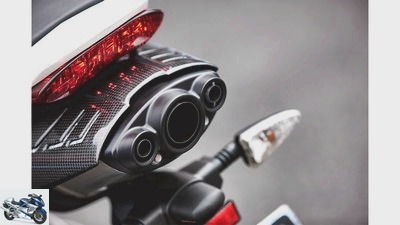
Paul Barshon
19/43
The Daytona only carried the exhaust under the rear until 2013.
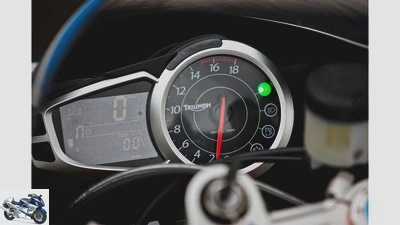
Paul Barshon
20/43
Triumph Daytona 675 R.
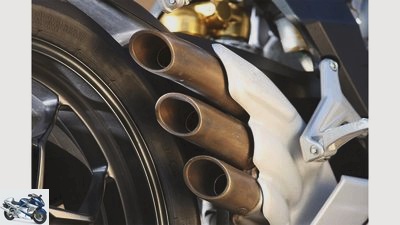
markus-jahn.com
21/43
Characteristic number two: the flute exhaust. Three organ pipes stand for three cylinders with a grumpy sound.
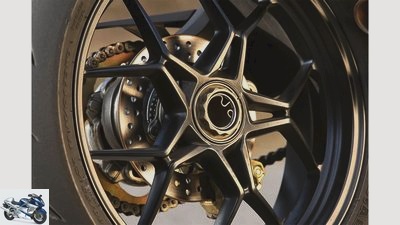
markus-jahn.com
22/43
Positive: So beautiful that you would love to put it in your living room, three-cylinder engine full of character, rock-solid chassis, poisonous brakes.
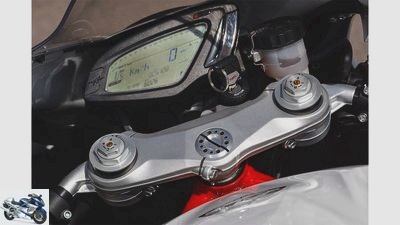
Jorg Kunstle
23/43
Negative: Rough engine running, generally coarse mechanical background noise, half-baked electronics, extremely delicate dimensions.
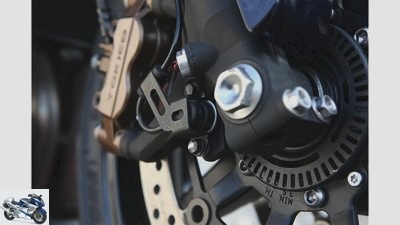
Markus Jahn
24/43
From 2009, the CBR 600 RR had an ABS system that weighed ten kilograms and that could not be switched off.
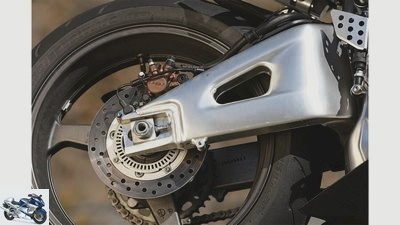
Markus Jahn
25/43
The electronically controlled combination brake distributes the braking force
Front and rear wheel.
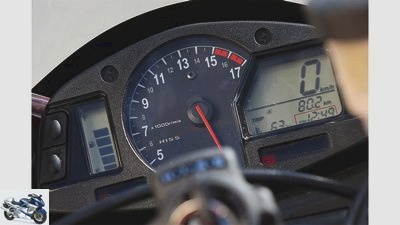
Markus Jahn
26/43
Analog tachometer, digital speedometer on the Honda CBR 600 RR.
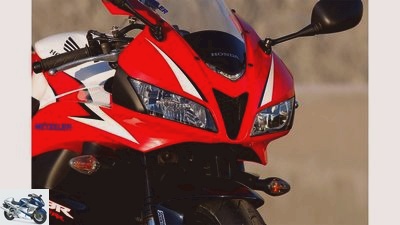
Jaime de Diego
27/43
Positive: high availability plus many spare parts, balanced driving behavior up to suitability for everyday use, mechanical
extremely reliable.
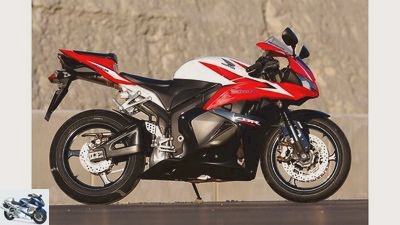
Jaime de Diego
28/43
Negative: Comparatively weak engine, no slipper clutch, hard throttle response, early stops for an athlete.
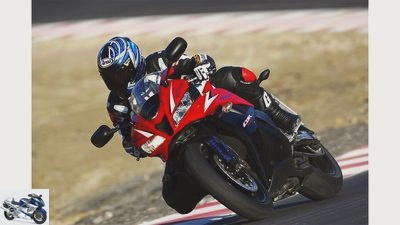
Jorg Kunstle
29/43
Honda CBR 600 RR.
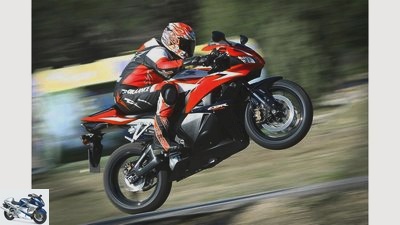
markus-jahn.com
30/43
Toy number 1: Honda CBR 600 RR.
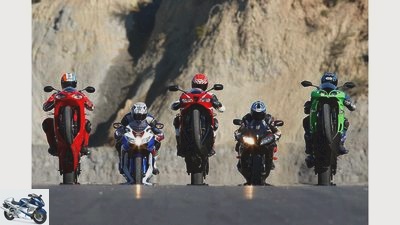
Jaime de Diego
31/43
What can they do, what do they do and what is the used market like?
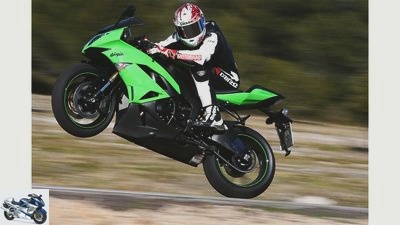
Markus Jahn
32/43
Toy number 2: Kawasaki ZX-6R / 636.
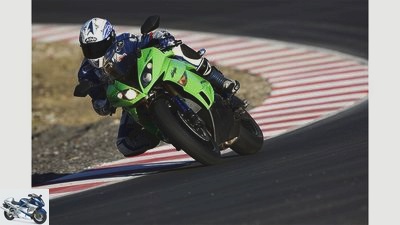
Jorg Kunstle
33/43
From the year of construction 2013, the above-average braking system received an anti-lock braking system.
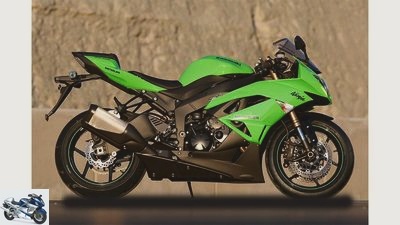
Jaime de Diego
34/43
Negative: High price level with newer 636 models, rough engine running, in the past problems with leaky valve covers and too weak timing chain tensioner.
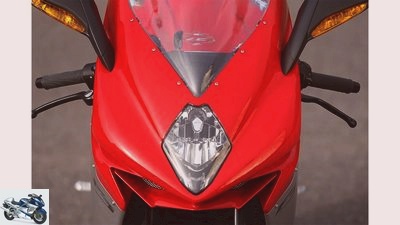
markus-jahn.com
35/43
Characteristic number one: the cyclops eye. A mono headlight has never been more beautiful than that of an MV.
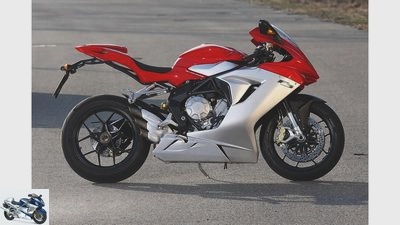
markus-jahn.com
36/43
MV Agusta F3 675.
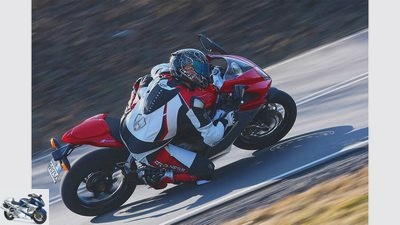
markus-jahn.com
37/43
MV Agusta F3 675.

markus-jahn.com
38/43
Toy number 3: MV Agusta F3 675.
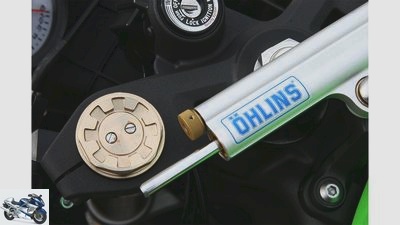
markus-jahn.com
39/43
Kawasaki ZX636.
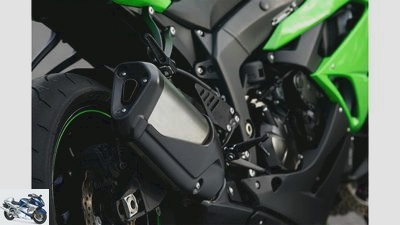
fact
40/43
The Kawa is less exciting with its exhaust sound, but the intake noise from the airbox is addicting.
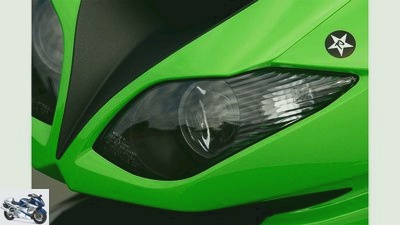
fact
41/43
Kawasaki ZX636.
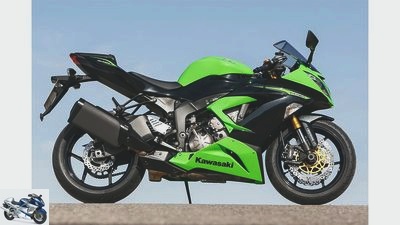
Jorg Kunstle
42/43
Positive: 636 engines with full speed mid-range with simultaneous revving, good ergonomics and generous space, beguiling sound from the airbox.
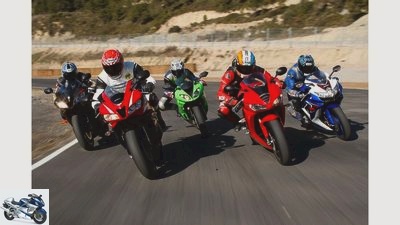
Jaime de Diego
43/43
We take a closer look at six six hundred.
counselor
traffic & business
Market analysis The decline of the 600 super sports car
Market analysis of the 600 super sports car
Decline of a class?
Content of
It wasn’t long ago that the supersport bikes were the little man’s racehorse – inexpensive, reliable and versatile. Today it looks different. why?
Uwe Seitz
06/16/2015
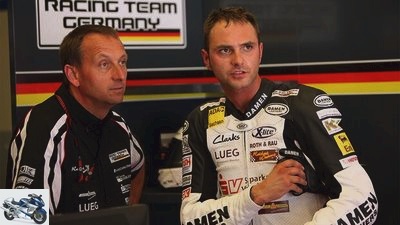
2snap
Arne Tode (on the right in the picture; on the left Dietmar Franzen) advises amateur racers to buy a 600.
If you look at the new developments in the 600 super sports segment over the past five years, sporty speed fans get wistful. Except for the expanded engine that was reintroduced in 2013 Kawasaki 636 with an additional electronics package and the complete novelty MV Agusta F3 with the 675 cubic three-cylinder engine the year before, apart from a few small improvements or new colors, next to nothing happened to the 600 racers. That is why many are already talking about the end of this category.
Buy complete article
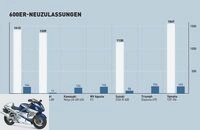
Market analysis of the 600 super sports car
Decline of a class?
4 pages) as PDF
€ 2.00
Buy now
Honda took the last year CBR 600 RR already from the sales program. It was even said that the brand with the grand piano would completely discontinue the once so successful 600 series. Even if that is now off the table, as Honda’s press spokesman emphasizes to PS that the “little” Fireblade is back in the program for this year – what’s going on with the 600s?
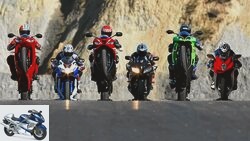
Used purchase
Second-hand market overview of the 600 super sports car
Racing doesn’t have to be expensive
read more
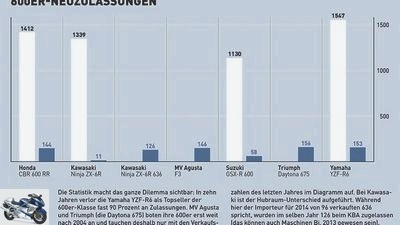
Graphic: MOTORCYCLE
The statistics make the whole dilemma visible: In ten years, the Yamaha YZF-R6, the top seller in the 600 class, lost almost 90 percent of its registrations. MV Agusta and Triumph (the Daytona 675) did not offer their 600s until well after 2004 and therefore only appear in the diagram with the sales figures from last year. For Kawasaki, the difference in displacement is listed. While the importer speaks of 96 636s sold in 2014, 126 were registered with the KBA in the same year (that could also have been machines from 2013).
A look at the statistics of new registrations only for the first quarter of this year is a revelation. The best-selling supersport motorcycle was the BMW S 1000 RR in ninth place with 516 pieces. The best 600 was placed with the Triumph Daytona 675 in 128th place with just 55 new registrations – and that includes demonstration motorcycles and various fleet models. Incidentally, Suzuki’s aged GSX-R 750 lands in the same statistics with 143 pieces, as well as all popular superbikes including the Ducati 1299 and 1199 as well as the rather exotic Aprilia RSV4 placed far ahead of the 600s.
The situation becomes completely dramatic if you compare the figures from the Federal Motor Transport Authority (KBA) today with those ten years ago. the Yamaha YZF-R6 As the most successful supersport cannon in 2004, it received 1547 new registrations and landed on a good one in the displacement category 599 to 749 cubic with all the everyday and Sunday strolling bikes from 650 V current to the top seller Honda CBF 600 (over 6000 units) seventh place. The other Japanese brands’ 600 athletes were not far from Yamaha’s numbers (see graph). Last year, however, the R6 only attracted 153 buyers to the registration office – a drop of around 90 percent compared to 2004!
600 market fell sharply worldwide
Although a couple of R6s went straight from the dealer to the racetrack after the conversion and never got a license plate, these numbers are still dramatic. Internally, the R6 at Yamaha finally dropped from one of the former top sellers to 14th place in Yamaha sales over 125 cubic meters in 2014. The following development can be roughly summarized: From 2008, in the crisis year 2009, the 600 market worldwide halved, which was partly due to the gigantic slumps in southern Europe – for example Italy and Spain, where the 600 market is partly due to insurance and tax regulations, especially among young people Sports fans enjoyed great popularity. But this cut was not the end of the descent, because from 2009 to 2013 the remaining market was halved again.
Price difference too “huge” Bikes is lower
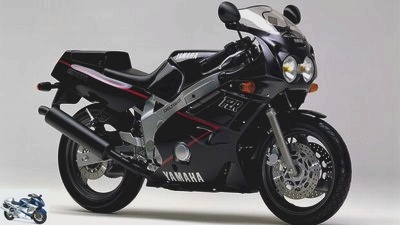
archive
600s from the Yamaha FZR (picture) suitable for everyday use, but also the CBR 600 F from Honda made real super sports cars affordable for many.
Let’s leave the sober numbers alone at this point. After all, there has to be a reason for this decline in the price of the once so widespread 600 series. The elderly among us remember how often the Kawasaki GPZ 600 R, for example the hottest 600 with 85 nominal horsepower, drove towards or around one at the end of the 1980s. At that time most of them found their way into the four-stroke supersport family with a CBR 600 F or the Yamaha FZR 600, which broke through the 90 hp mark in 1989 and were still able to easily keep up with non-athletes who were common at the time. In PS 3/1989 it was said about the Honda: “The engine clearly proves that a high-performance engine with perfect coordination, running smoothness and good everyday manners can be a pleasure.” The everyday manners of today’s 600 rpm organs are not far off . And the 600 series back then offered two great advantages. They were technically superior to non-athletes, especially in terms of chassis and brakes, and served their pilots, who were mostly young boys around 18 to 25, with an attractive package of handling and performance that was now available for just under 10,000 marks. Real superbikes cost over 16,000 marks at the same time.
Today the price structure looks significantly different, and in the reader survey on the PS Facebook page on the condition of the 600 class, most of the people complain about this very situation. For example, Flo Burke writes: “New price and price difference to “huge” Machine make the models more and more unattractive. Why buy a 600 for 13,000 euros when I can get an almost new one or a brand new 1000 for 3000 euros more? ”
1000s popular because of German greed for performance?
Especially since the 1000 series suggests even easier drivability through the full electronics package with traction control etc. The former IDM Supersport racer and R6 Cup winner from 2006, Pascal Eckhardt, sees it the same way and, as a true 600 fan, is not happy about the market development of the segment. “As a die-hard R6 fan, especially for the racetrack, I shouldn’t really be surprised, because the arms race for the Supersport World Championship made the 600s what they are today,” analyzes the Sonthofen-born. “In the search for more and more power for racing victories, the everyday usability of the bikes went completely flat. And in order to achieve this necessary top performance, the engines were bred with enormous development effort, which makes the 600s very expensive. ”
Did the 600s then at least gain a strong position on the racetrack? “The 1000s are so popular,” explains Wolf Tons, whose race track training and racing series company Art Motor is one of the most experienced providers in this area. “In my opinion, that has to do with the German greed for performance.” Nevertheless, Tons noticed a small renaissance of the 600s on the race. “We also have a series for older 600s because many people have noticed that they can cope much better with these, so that they are often hardly slower than with 1000s and, in addition to increased racing fun, they can also have racing for less.”
600 perfect for training on the racetrack
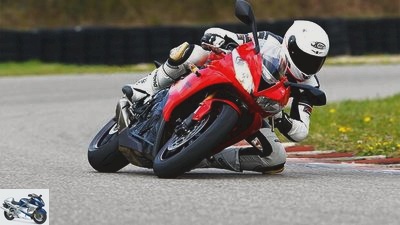
fact
When the Daytona 675 was introduced, the 600 market was still relatively healthy and the three-cylinder was a bomb. In the first quarter of 2015, it was ahead of the other 600s with 55 registered specimens.
Ex-Supersport World Championship riders Christian Kellner and Arne Tode, who won two German Supersport championship titles and also competed in the Grand Prix as a Moto2 driver with 600 cc engines, also emphasize the advantages of the 600 cc machines. “With the 600 you feel much easier on the racetrack. Their handling and performance are actually exactly the right thing for hobby racers to perfect their driving style, line, braking and acceleration, ”explains Kellner. “Instead, everyone on the straight turns the 1000-speed throttle to the limit and is happy about the lap times, even though they lose more seconds in the crucial zones before and after the apex of the bend with the 200-hp Bolliden, because they are extremely stressful there despite the assistance systems are, ”adds Tode.
Young racing talent cannot avoid 600 cc
However, the big sport does not exactly cause euphoria among the hobby racers when it comes to the 600s. The Supersport World Championship is almost meaningless, at least in this country, despite a good German driver like Kevin Wahr, and this year there are just nine firmly registered drivers at the start in the IDM Supersport. Arne Tode can’t really explain that either, because with Moto2 in the Grand Prix, the machines with the 600cc Honda standard engine form one of the most exciting and best-occupied racing classes of all.
And after all, the youngsters cannot avoid the 600s. As before, the Yamaha R6 Dunlop Cup stands for excellent youth work, ex-Supersport world champions like Jorg Teuchert or even wild warhorses like Rico Penzkofer came from the oldest brand cup, which gave the youngsters an atmospheric match at the professional Racing. It is not for nothing that aspiring young racers from all over Europe enroll in the cup. From an international perspective, the Spanish Moto2 championship is the springboard for riders from all over the world into the great racing sport. At least at the racing level, the 600 lull seems to be a German phenomenon. Even a Moto2 world champion Stefan Bradl in 2011 couldn’t make a difference.
600 remain an integral part of the product range
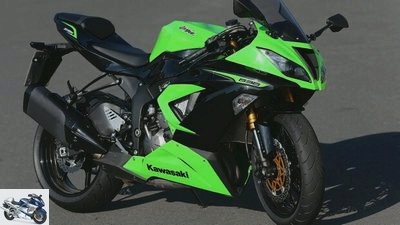
markus-jahn.com
More displacement, ABS and traction control – despite this, the current Kawawasaki ZX-6R 636 hardly finds any buyers.
The question arises whether a fresh wind could soon be blowing again at the 600s. The current 600 manufacturers from England to Japan are silent about this and do not want to disclose anything about possible new developments. However, they largely all emphasize that the 600 series will remain an integral part of the product range. Kawasaki is even making the effort to continue two models, namely the ZX-6R with 599 cc, which can almost only be sold for racing, and the ZX-6R 636, which with its larger displacement offers a little more suitability for everyday use and thus sales arguments – Still only sold 96 times in 2014.
It is speculative that new models would create new incentives to buy. However, given the market situation, new players in the field are not to be expected. If you consider that the development of a brand new 600 is about the same as the investment of a new 1000. It is true that electronic systems such as traction control or ABS can be safely adapted, the sense of which is a big question mark in the 600 series given the price sensitivity of customers and the carefree driveability. But chassis and engine alone devour millions in development that can hardly be redeemed in the current market. That is why the rumor of a BMW in this segment, which quickly made the rounds after the market launch of the S 1000 RR, has long since vanished into thin air.
600 popular on the used market
But one thing speaks very clearly in favor of the 600 series: the used market. The dealers we interviewed all agreed that a well-maintained 600 for a good price will not be in the sales room for long. Customers are the young beginners who love the super athletes precisely because of their image as dynamic sweeps with fantastic handling on the one hand and their descent directly from racing and can only afford them second-hand. In view of the aging motorcyclists, the manufacturers cannot be completely indifferent to this segment. Super sports cars at a price of less than 8,000 euros for a naked Yamaha MT-09 would be ideal. This and other bikes have given the Neumarkt a strong boost since last year. There is a need for action!
Second-hand market overview of 600 super sports cars
Related articles
-
New super sports cars from BMW, Buell and Aprilia
Drawing; power counselor technology & future New super sports cars from BMW, Buell and Aprilia New super sports cars from BMW, Buell and Aprilia Project…
-
600 series super sports car used overview
jaime de diego 43 pictures fact 1/43 Positive: engine speed hornier, more toxic Engine, chassis consistently geared towards racing Model RJ11 compression…
-
Technology of the new 600 super sports car
counselor technology & future Technology of the new 600 super sports car Technology of the new 600 super sports car New base The new 600 super athletes…
-
Model report 600 super sports car
motorcycles Model report 600 super sports car Model report 600 super sports car Let the good times roll Looking back ahead: 18 years of 600s are enough!…
-
Little super athletes: what the new sports class looks like
Yamaha Europe 22nd pictures Richard Platzer 1/22 Richard Platzer converted three MT-07s to MTR-07s, used the American fairing kit and is using the…
-
used super sports car for the racetrack
www.factstudio.de 12th pictures Honda 1/12 Honda CBR 600 RR, 2003. With a little luck and patience, you can find an offer for the first model series…
-
Kar Lee Kardesign: super sports car with a retro design
Card design by Kar Lee 10 pictures Card design by Kar Lee 1/10 The Ducati Supersport 939 with the paintwork of the Ducati MHR 1000 Mike Hailwood Replica….
-
Technology: engine technology super sports car
fact 23 pictures fact 1/23 The Honda Fireblade has been a great performer for twenty years. PS takes a close look at the development of engine…
-
This is how the new super sports technology works
Suzuki 20th pictures Suzuki 1/20 The Suzuki GSX-R combines high tech with clever engineering. Suzuki 2/20 This centrifugal force mimic adjusts the timing…
-
counselor traffic & business End of the 600 super athletes The end of the 600 super athletes Over and over! Content of 2016 was the last model year in…